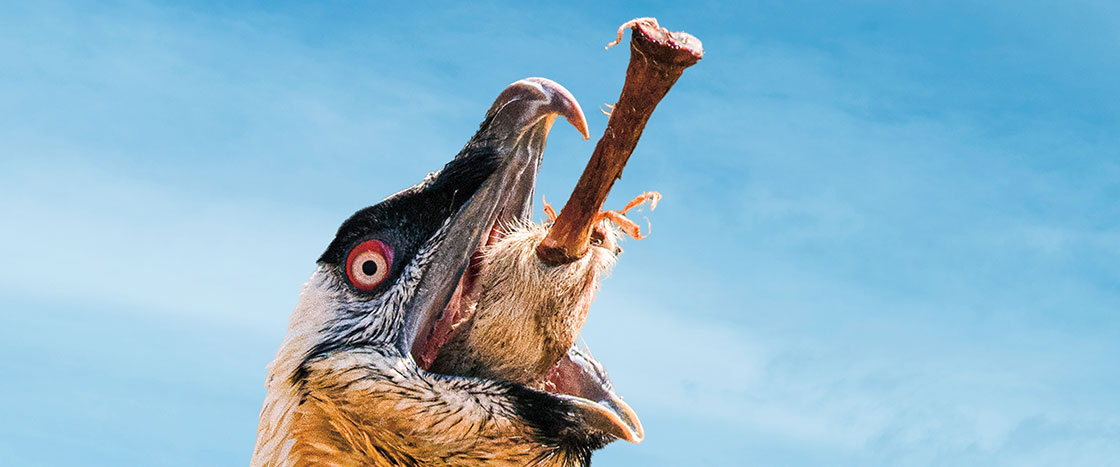People leave bones behind when they are done eating. Most animals do too. But that’s not true for bearded vultures. Bones are their favorite food!

Bones for Breakfast!
Learn about bearded vultures and their favorite food.
Standards
Belly Full of Bones
Bearded vultures live high in the mountains.
They are scavengers. This means they eat only dead things.
But bearded vultures are special. They are the only animals in the world that eat mostly bones. They even suck out the insides of the bones!
Breaking Bones
These birds are very smart. They know what to do if a bone is too big to eat.
They fly up in the air with it. Then they drop the bone on a hard rock. Sometimes they do that over and over. That breaks the bone into smaller pieces so it’s easier to eat.
When that bone breaks, it’s time for dinner! CRUNCH!
More About the Article
Science Focus
Animal adaptations
1. BEFORE READING
Preview the Nonfiction Text Features / Visuals (5-10 minutes)
- Take a look at the nonfiction text features. First, focus on the big photo. Ask kids to share what they notice about the bearded vulture.
- Can they find the caption pointing to the big photo of the bearded vulture? A caption is a word or group of words that give information about a photo. What does the caption say? (bearded vulture)
Introduce Nosey (3 minutes)
- Point out our dog character, Nosey, on page 3. Ask someone to read her voice bubble.
- Explain that Nosey pops up throughout Storyworks 2. Not only does she have a long nose to sniff out facts, but she’s also nosy! She’s curious and wants to know about everything.
2. READ THE ARTICLE (10 minutes)
- You can read this short article aloud together as a class, in small groups, or individually.
- Point out the context clues that help define the bold word scavengers.
3. AFTER READING
ELA Focus: Quiz (10 minutes)
- Pass out the quiz for a quick comprehension check.
- Both quizzes are available in multiple-choice and written-answer formats.
ELA Focus: Key Details (20 minutes)
- It’s time to help Nosey fill out her Fact File! Print out Nosey’s Fact File from the Resources section. Kids can find facts from the article.
- Each fact box is scaffolded to help kids know what to write.
- Kids can share their facts with a partner, the other students at their tables, or the whole class, or they can email their Fact Files to Nosey at nosey@scholastic.com!
